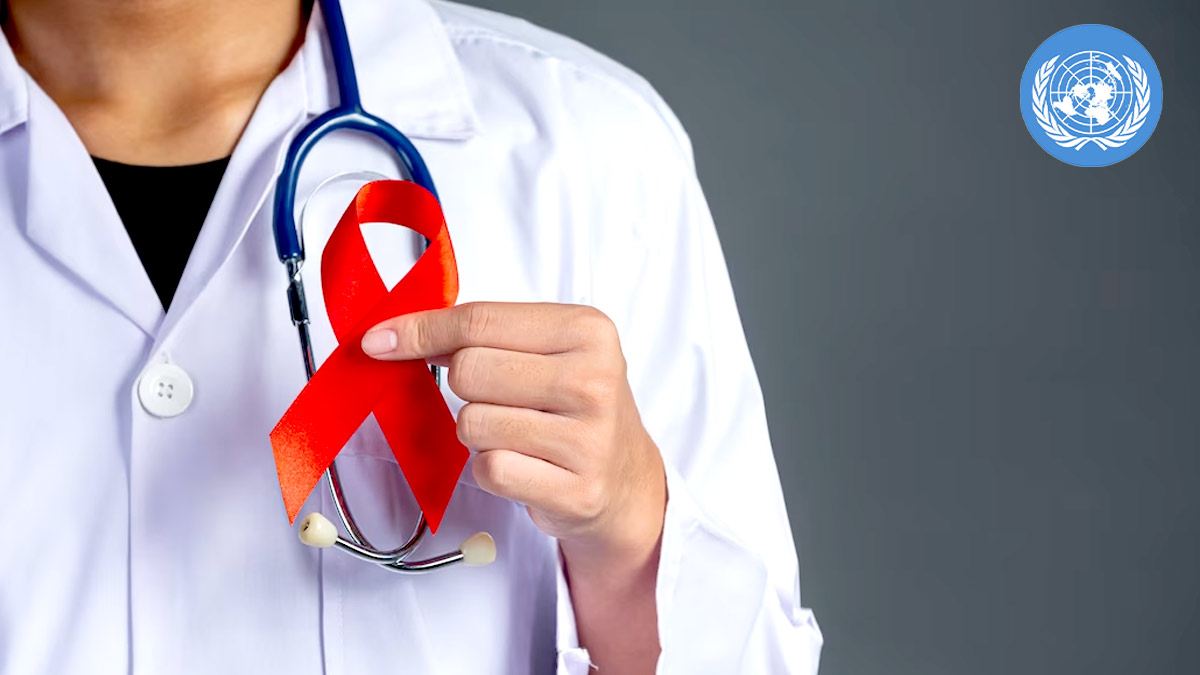
The World Health Organization (WHO) has taken significant strides in the global fight against HIV/AIDS by releasing new scientific and normative guidance during the 12th International AIDS Society (IAS) Conference on HIV Science. These groundbreaking guidelines, accompanied by a comprehensive Lancet systematic review, shed light on the crucial role of HIV viral suppression and undetectable virus levels in improving individual health and halting HIV transmission.
With a focus on HIV viral load thresholds and approaches to measure virus levels, Dr. Sabine Kapasi, Public health leader at UNDAC & Geneva explains WHO's latest guidance which aims to transform the lives of millions of people living with or at risk of HIV.
1. The Power of HIV Viral Suppression
The new WHO guidance emphasises the significance of HIV viral suppression and achieving undetectable virus levels through consistent use of antiretroviral therapy (ART). Individuals who achieve viral suppression can confidently expect not to transmit HIV to their sexual partners and are at a low risk of vertically transmitting the virus to their children. Moreover, the evidence suggests that maintaining a suppressed viral load (measured at less than or equal to 1000 copies per mL) significantly reduces the risk of HIV transmission.
2. Transformative Impact of Antiretroviral Therapy
Antiretroviral therapy continues to be a game-changer in the lives of people living with HIV. Early diagnosis and prompt treatment adherence enable those with HIV to enjoy the same health and life expectancy as their HIV-negative counterparts. This highlights the importance of timely diagnosis and access to life-saving medication to ensure improved health outcomes and a better quality of life for those living with HIV.
Also read: World Breastfeeding Week 2023: Date, Theme, History And Significance
3. Addressing Viral Suppression Disparities
As of the end of 2022, approximately 76% of all people living with HIV were receiving antiretroviral treatment, with 71% of them achieving viral suppression. While this marks positive progress in HIV management for adults, there is an urgent need to address the disparity in viral load suppression among children living with HIV, which stands at only 46%. This issue demands immediate attention and targeted interventions to improve health outcomes for the younger population.

3. Integrating mpox Detection and Prevention
The new guidelines also shed light on the link between HIV and mpox, a multi-country outbreak. Data analysis during the outbreak revealed that a significant proportion of mpox cases were among individuals living with HIV, particularly men who have sex with men (MSM). Integrating mpox detection, prevention, and care with existing HIV and sexually transmitted infection programs is recommended to mitigate the risk and impact of these co-occurring infections.
4. HIV and COVID-19 Impact
A comprehensive analysis showed that people living with HIV face a persistently high risk of death when hospitalised for COVID-19, with a mortality rate of 20%-24%. While the risk of death decreased significantly for people without HIV during the Omicron variant wave, the decline was modest for individuals with HIV. To protect people living with HIV from future pandemics, it is vital to integrate HIV considerations in pandemic preparedness and response, emphasising access to testing, treatment, and preventive vaccines.
Also read: World Breastfeeding Week 2023: Date, Theme, History And Significance
5. Expanding HIV Testing Services
WHO's latest recommendations encourage countries to expand the use of HIV self-testing and promote testing through sexual and social networks. By doing so, testing coverage can be increased, and uptake of HIV prevention and treatment services can be strengthened, particularly in high-burden settings and regions with limited testing coverage.
6. Optimising Primary Health Care and HIV
A new policy framework on primary health care (PHC) and HIV aims to optimise work and collaboration between disease-specific responses, including HIV, and universal health coverage. Integrating HIV considerations within primary health care is critical to achieving the ambitious goal of ending the global AIDS epidemic.
Conclusion
With the release of these cutting-edge guidelines, WHO continues its unwavering commitment to combat HIV/AIDS. While progress may have faced challenges due to the COVID-19 pandemic, the global response is now gaining momentum. With countries like Australia, Botswana, Eswatini, Rwanda, United Republic of Tanzania, and Zimbabwe approaching the 95-95-95 global targets, the prospect of ending the HIV/AIDS epidemic is within reach. Through collaborative efforts and the implementation of these evidence-based guidelines, WHO and its partners strive to make a significant difference in the lives of people affected by HIV, moving closer to a future where HIV/AIDS is no longer a global burden.







